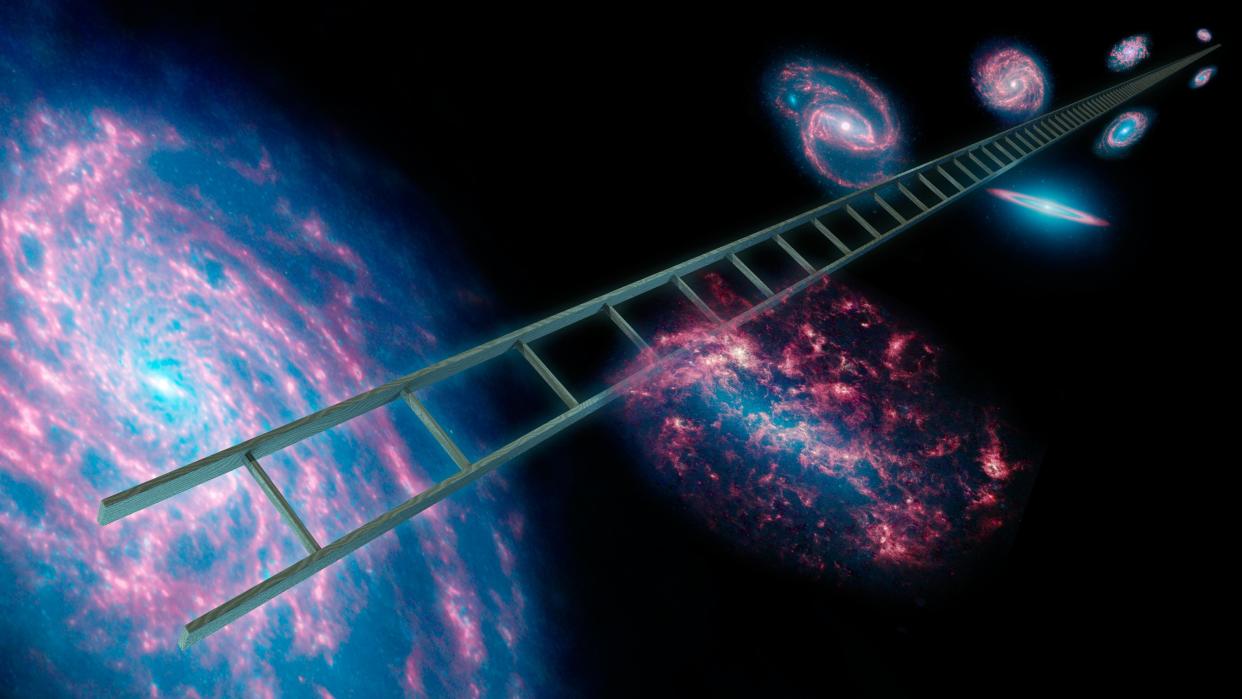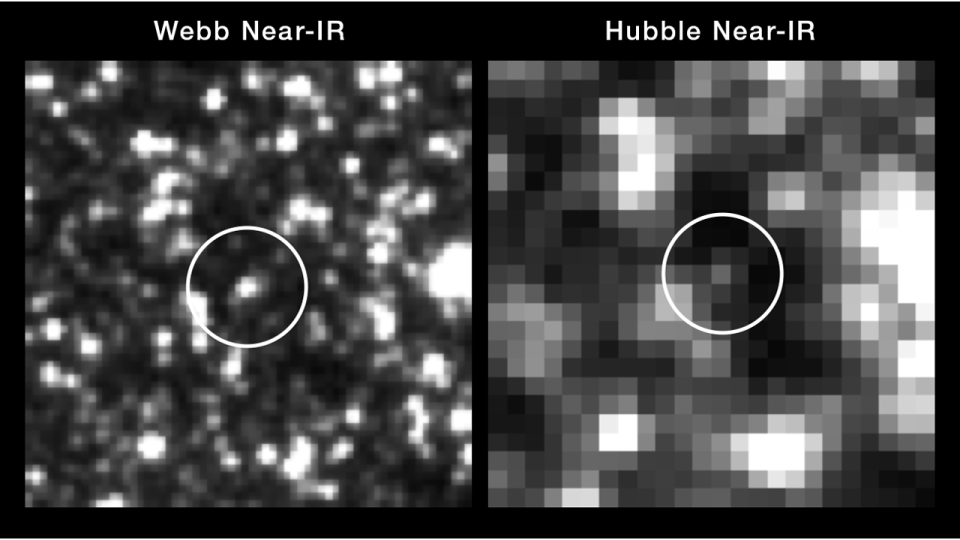James Webb Space Telescope complicates expanding universe paradox by checking Hubble's work

The James Webb Space Telescope (JWST) has double checked the work of its older sibling, the Hubble Space Telescope. Hubble's measurements of the expansion rate of the universe are exemplary, the trailblazing observatory found, further ratcheting up the so-called "Hubble tension."
Putting it simply, measurements of the expansion rate of the universe, defined by a property called the Hubble constant, just don't add up.
Related: Dark energy is forcing the universe to expand. This new observatory may show us how
On one hand, observations of the cosmic microwave background (CMB) radiation, which is like a baby picture of the cosmos from just 379,000 years after the Big Bang, say the universe should be expanding today at a rate of about 67.8 kilometers per second per megaparsec. This means that every volume of space a million parsecs (3.26 million light years) across should be expanding at a rate of 67.8 kilometers (42.1 miles) every second.
An alternative way to measure this expansion is by climbing onto the cosmic distance ladder, where each rung is formed by a different astrophysical milestone such as Cepheid variable stars and Type Ia supernovas. How bright these objects are can tell us their distances, which we can then compare to their redshift values to determine how much the universe has expanded while their light has been traveling to us. The problem, however, is this method gives us a completely different value of the Hubble constant: Somewhere around 73.2 kilometers (45.5 miles) per second per megaparsec.
The apparent paradox between the two measurements is what cosmologists have started calling the Hubble tension. Nobody knows what is causing it, but some hypotheses call for new physics to explain the apparent contradiction.
One possible explanation is that there is a measurement error on the bottom rung of the cosmic distance ladder, which is home to the Cepheid variables. These are stars with luminosities that predictably fluctuate as the stars pulse in and out. The longer the pulsation period between moments of maximum luminosity, the greater that maximum luminosity is. This period–luminosity relation allows us to accurately calculate their distances to Earth; it's possible to measure the pulsation period to calculate maximum luminosity, then, based on how bright a Cepheid variable appears in the sky to us, we can work out how far away it must be to appear that bright.
It's not quite a foolproof method, though.
The Hubble Space Telescope is able to observe Cepheid variables in distant galaxies, but the more distant they are, the harder they become to distinguish among all the other stars that crowd around them. As such, there was a concern that unresolved stars adjacent to Cepheid variables in these faraway galaxies were adding to the Cepheids’ apparent brightness values, creating an unseen and systematic error in the measurements. Interstellar dust can also affect the brightness of Cepheid variables, dimming them from our vantage point on Earth.

But new measurements achieved with the James Webb Space Telescope of five galaxies hosting a combined total of more than a thousand Cepheid variables have ruled this possible error out. The JWST's infrared vision is able to cut through the interstellar dust, while its greater resolution allows it to clearly resolve the Cepheid variables so they stand out from the crowd. From these JWST measurements, astronomers led by Adam Riess of Johns Hopkins University determined that Hubble's original measurements were spot on.
Related Stories:
— 'Hubble trouble' could deepen with new measurement of the universe's expansion
— Could a 'supervoid' solve an unrelenting debate over the universe's expansion rate?
— The expansion of the universe could be a mirage, new theoretical study suggests
"We've now spanned the whole range of what Hubble observed and we can rule out a measurement error as the cause of the Hubble tension with very high confidence," said Riess in a statement.
The five galaxies observed by the JWST, the most distant of which is NGC 5468 at 130 million light-years from us, have also hosted a combined total of eight Type Ia supernovas over recent decades. These supernovas, which signal the destruction of white dwarfs, have a standardizable luminosity curve, and form the next rung on the cosmic distance ladder above Cepheids. Because the preceding rung is required to calibrate the next rung, the JWST's observations of Cepheid variables therefore makes the distance measurements using Type Ia supernovae — which are bright enough to be seen in much more distant galaxies than Cepheids — more accurate. And they too tell us that there is a contradiction in the different measurements of the Hubble constant.
"With measurement errors negated, what remains is the real and exciting possibility we have misunderstood the universe," said Riess.
The team's results are a long time coming, having previously been available on the pre-print server arxiv and earning chatter late last year. But now that they're published fully, perhaps we can finally close the chapter of blaming Hubble tension on none other than Hubble itself.
The results of Riess' team were published on 6th February in The Astrophysical Journal Letters.

